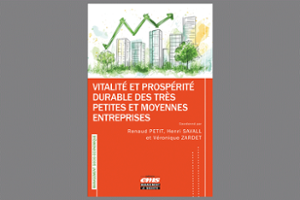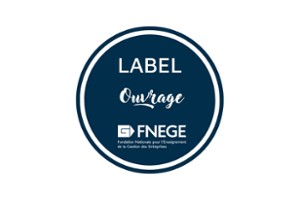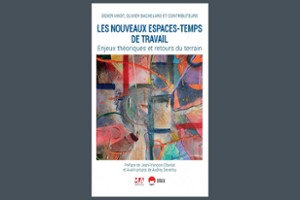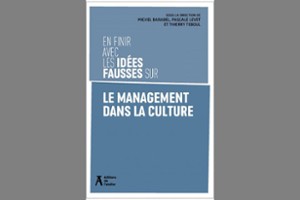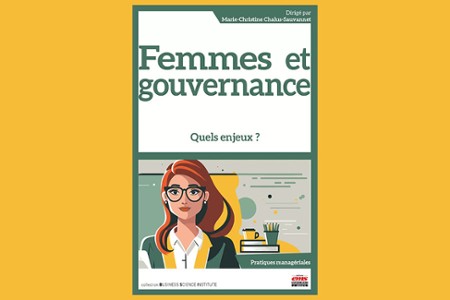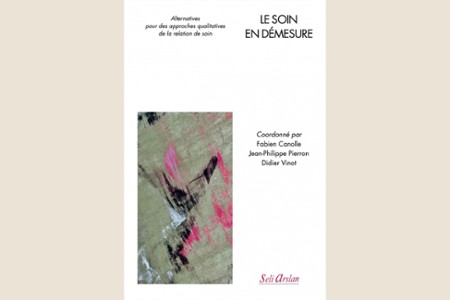Dans la même rubrique
Accueil :
- Accueil FR
- Publications
Publications
Publications
► Voir tout
- [hal-05105509] A global industrial perspective on lean industry 4.0: a qualitative wide-angle lens approach10 juin 2025This paper provides an insight into the global state of Lean Industry 4.0 (LI4) with over 1,000 industry responses. The approach employs a rigorous qualitative open-response survey. Our findings indicate that there was no unified industry perspective of LI4 terminology. The evolution of I4 is taking a similar path to Lean and making the same mistakes by not focusing on leadership, engagement, competencies, and behaviours. Past academic research has perhaps over-emphasised the environment and supply chain. The benefits of LI4 application are largely in terms of efficiency, cost reduction, learning and engagement. This work contributes by highlighting research avenues: why a piecemeal approach has been taken by industry to LI4, why LI4 has not been more widespread, and more detailed studies around contingent factors). It also provides industry with lessons on how to implement LI4 and the mistakes to avoid such as seeing implementation as a purely technical exercise.
- [hal-04381570] Does relationship lending help firms to ask for credit? European cross-country evidence9 juillet 2025Relationship lending is well known to allow SMEs to obtain credit, however one of the most crucial obstacles for these firms is not obtaining credit but applying for credit in the first place. We explore how relationship lending impacts the demand for credit, i.e., borrower's discouragement. Using a European cross-country survey of more than 2300 firms in 2010, we show that firms that rely on relationship lending to get access to credit refrain from applying in the first place. We show that this result is due to a self-rationing mechanism: riskier firms employing relationship lending tend to be more discouraged. Instead, the use of transactional lending reduces discouragement, and this effect does not depend on firms' risk. Our results suggest that firms employing relationship lending know their own likelihood of rejection better and can decide when not to apply.
- [hal-04381575] Women self-perception and access to credit: The power of role models1 octobre 2025This study demonstrates how female role model encourages women-led firms to apply for a credit. Employing a sample of 29,157 firms from 112 countries between 2009 and 2020, our results indicate that the exposure to a female political leader offsets the likelihood for woman-led firms to be discouraged. This is explained by reduced emotional barriers to apply for a credit and is function of the personal status of the role model and its proximity with the female CEO.
- [hal-04710120] Family firms and carbon emissions26 septembre 2024This study examines the relationship between family firms and carbon emissions using a large cross-country dataset of 6600 non-financial firms over the period 2010–2019. We find that family firms emit less carbon than non-family firms, especially after the Paris Agreement. Several factors contribute to this outcome, including governance structure, the degree of family control, R&D spending, and the issuance of green patents. Our study also shows that despite lower carbon emissions, family firms have lower environmental scores, primarily due to their reduced public commitment to emission reduction. Both environmental scores and carbon emissions increase when non-family CEOs are appointed and when family ownership decreases, indicating that agency conflicts may influence these outcomes.
- [hal-05345071] Safeguarding worker psychosocial well-being in the age of AI: The critical role of decision control3 novembre 2025Advancements in artificial intelligence (AI) have ushered in the era of the fourth industrial revolution, transforming workplace dynamics with AI's enhanced decision-making capabilities. While AI has been shown to reduce worker mental workload, improve performance, and enhance physical safety, it also has the potential to negatively impact psychosocial factors, such as work meaningfulness, worker autonomy, and motivation, among others. These factors are crucial as they impact employee retention, well-being, and organizational performance. Yet, the impact of automating decision-making aspects of work on the psychosocial dimension of human-AI interaction remains largely unknown due to the lack of empirical evidence. To address this gap, our study conducted an experiment with 102 participants in a laboratory designed to replicate a manufacturing line. We manipulated the level of AI decision support-characterized by the AI's decision-making control-to observe its effects on worker psychosocial factors through a blend of perceptual, physiological, and observational measures. Our aim was to discern the differential impacts of fully versus partially automated AI decision support on workers' perceptions of job meaningfulness, autonomy, competence, motivation, engagement, and performance on an error-detection task. The results of this study suggest the presence of a critical boundary in automation for psychosocial factors, demonstrating that while some automation of decision selection can nurture work meaningfulness, worker autonomy, competence, self-determined motivation, and engagement, there is a pivotal point beyond which these benefits can decline. Thus, balancing AI assistance with human control is vital to protect psychosocial well-being. Practically, industry and operations managers should keep employees involved in decision making by adopting partial, confirm-or-override AI systems that sustain motivation and engagement, boosting retention and productivity.
- [hal-04723054] Human-centred AI in industry 5.0: a systematic review6 octobre 2024<div><p>Industry 4.0 (I4.0) is a manufacturing paradigm revolutionising production by integrating advanced technologies, like AI, for automation and data integration. However, research in I4.0 overlooks human factors, crucial for designing systems that enhance well-being, trust, motivation, and performance. To address this, international bodies have introduced Industry 5.0, aiming to balance technological advancement with human welfare. To transition towards this vision, an understanding of current human-technology interaction is essential. Through a conceptual model aiming to understand the psychological experience of workers within their environment, we identified the studied human factors, their antecedents, consequences, and methodologies. Additionally, we explored how future research can adopt a human-centred approach in designing and implementing technology. Analysis of 67 articles showed the psychosocial dimension of human factors like AI trust, worker autonomy, motivation, and stress are underrepresented. We observed a significant disconnect between empirical and non-empirical studies in terms of theoretical frameworks, variable selection, data collection methods, and research designs. Our findings highlight the necessity for experimental, theory-driven research in human-AI interaction, using a multi-method approach including perceptual, observational, and psychophysiological measures. Lastly, we discuss the integration of these findings into managerial practice to foster workplaces that are technologically advanced yet remain empathetic to human needs.</p></div>
- [hal-05253260] Toward lean industry 5.0: a human-centered model for integrating lean and industry 4.0 in an automotive supplier13 septembre 2025This paper proposes a human-centered conceptual model integrating lean and Industry 4.0 based on the literature review and validated it through a case study in the context of an advanced automotive first-tier supplier. Addressing a significant gap in existing research on lean Industry 4.0 implementations, the study provides both theoretical insights and practical findings. It emphasizes the importance of a human-centered approach, identifies key enablers and barriers. In the implementation process of the case study, it is considered at group level and model site level through operational, social and technological perspectives in a five-phase multi-method approach. It shows what effective human-centered lean Industry 4.0 implementation look like and how advanced lean tools can be digitized. It highlights 26 positive and 10 negative aspects of the case and their causal relation. With the appropriate internal and external technological knowhow and people skills, it shows how successful implementation can benefit the organization and employees based on the conceptual model that serves as a first step toward lean Industry 5.0.
- [halshs-02374570] Investing Human Capital: Angel Cognition and Active Involvement in Business Angel Groups21 novembre 2019The present research sets out to reach a better understanding of the determinants of business angels’ active involvement in making business angel groups accomplish diverse functions and building cognitive resources and shared competencies. We develop a framework where angels’ decision making style and professional experience are key in explaining their degree and type of involvement with diverse business angel group activities. To test the related propositions, we conduct a questionnaire survey with the members of one of the largest French business angel groups. Our results show that business angels with a control-oriented decision-making style, as well as angels with previous professional experiences as a CEO and in marketing and sales, tend to be more actively involved in key angel group activities, both with regard to investment related activities and angel group management activities. While discussing the results, we propose a tentative model of angel group cognition and outcomes for future extensions of the present research.
- [hal-04389565] La gestion de la diversité cognitive : l’importance du rôle de coordination des investisseurs en start-ups. Une étude exploratoire11 janvier 2024La diversité cognitive est souvent marquée entre les différents investisseurs (business angels et capital-risqueurs) et les dirigeants de start-up. Cette diversité est à la fois source d’innovation et de mécompréhension entre les acteurs. Elle doit donc être coordonnée pour non seulement assurer la survie de l’entreprise mais aussi lui permettre de se développer dans un environnement technologique turbulent. À l’aide d’une étude de cas longitudinale comparative de deux start-ups en relation avec différents investisseurs, nous menons une étude exploratoire pour investiguer la fonction de coordination cognitive. Nous élaborons un modèle des qualités que doit réunir un acteur afin de pouvoir exercer cette fonction.
- [hal-03955028] Liquidity Creation and Trust Environment24 janvier 2023Trust towards banks plays a central role in theoretical literature. Diamond and Dybvig (1983) argue that in a trustworthy environment banks can easily collect deposit foster banking activity and asset transformation. Diamond and Rajan (2001) posit that a high trust environment discourages banks from creating liquidity. To address these conflicting views, the current study measures liquidity creation using Berger and Bouwman's (2009) methodology, then assesses the level of trust in the environment with four proxies and two additional instruments deployed in previous research. The results confirm a positive effect of trust in banks on liquidity creation, especially for small or state-chartered banks and during economic downturns. The results are robust to time effects and potential endogeneity concerns.
Archives ouvertes HAL
Portail des publications scientifiques de l'Université Jean Moulin Lyon 3.
Accéder au portail
Accéder au portail


